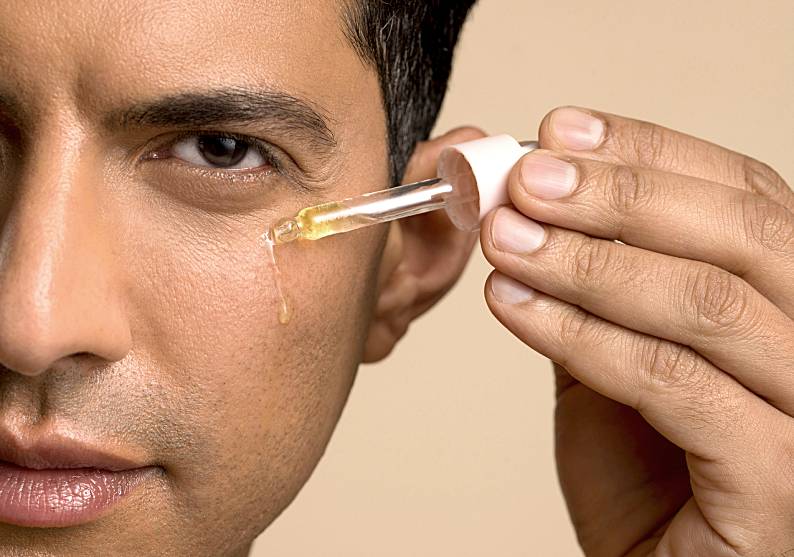words Alexa Wang
As you age, your skin undergoes various changes—from shifts in texture to the emergence of fine lines and wrinkles. These transformations demand different forms of attention and care, so tailoring a skincare routine to align with your age is crucial for maintaining a youthful and healthy appearance. Some people find a skincare line like the Dermalogica Skincare Collection and use it for different stages of their life, whilst others will constantly swap and change to try and make a routine that fits for a number of years, before re-starting all over again.
An age-appropriate skincare regimen combats existing issues and proactively prepares the skin for the future. From targeting acne during your teen years to understanding dynamic wrinkles in your thirties, this tailored approach can help you retain your skin’s optimal health and vitality.
For those who are uncertain about how to modify their skincare strategies, this article serves as a comprehensive guide for each decade of adult life.
Teens To Early 20s
In your teenage years and early twenties, the primary skin concern usually revolves around hormone-driven issues like acne and oiliness.
During this period, the focus should be on establishing a basic skincare routine that includes cleansing, toning, and moisturizing. Implementing these steps from a young age instills a habit that sets the foundation for lifelong skincare.
Exfoliation can also play a critical role at this stage. Removing dead skin cells prevents them from clogging pores, reducing acne problems. However, exercising caution with exfoliation is crucial, as overdoing it can result in skin irritation and sensitivity.
Therefore, moderation is essential for achieving the benefits without the drawbacks. It’s best to choose gentle but effective products, ideally those targeted toward acne-prone or oily skin.
Sunscreen is another non-negotiable element of skincare at this stage. While the signs of sun damage may not be immediately visible, it’s essential to use sun protection to prevent future issues like pigmentation and premature aging. Incorporate a broad-spectrum SPF into your daily routine to ensure that the skin is adequately protected.
Late 20s To 30s
This is the age bracket where early signs of aging, like fine lines, start to appear, and understanding dynamic wrinkles becomes more relevant.
Antioxidants like Vitamin C and E can be introduced to help fight off free radicals, which contribute to premature aging. At this stage, it is advisable to move beyond the basics of cleansing, toning, and moisturizing by incorporating serums that focus on specific concerns.
Exfoliation remains important but should be approached with more caution. In the late twenties and early thirties, the skin’s natural regeneration process begins to slow down, making it more susceptible to dryness and dullness. A gentle, chemical exfoliant can help to remove dead skin cells without causing excessive dryness.
Additionally, attention should be given to the eye area, where signs of aging first become apparent. Eye creams containing ingredients like hyaluronic acid or peptides can help to maintain skin elasticity and moisture, reducing the appearance of fine lines.
Incorporating these targeted treatments will assist in delaying the aging process while keeping the skin vibrant and healthy.
Late 30s To 40s
The late 30s to 40s is a pivotal decade for skincare, with significant shifts in hormones and decreased collagen production leading to more visible signs of aging.
In addressing these issues, the focus should turn to more targeted treatments such as retinol and hyaluronic acid serums. These powerful ingredients can help smooth out wrinkles and fine lines while also improving the skin’s overall texture.
Nourishment becomes essential at this stage. Rich, hydrating creams and oils can provide the extra moisture that maturing skin requires. Adding a night cream to your routine can work wonders, allowing the skin to repair and rejuvenate itself during sleep.
Consistency is key in your 40s. Sticking to a routine that incorporates these elements can make a substantial difference in how your skin ages. A meticulous approach to skincare during this decade can set the stage for healthier, more youthful skin in the following years.
The 50s And Beyond
As one moves into the 50s, the skin’s ability to retain moisture diminishes significantly, leading to dryness and loss of elasticity. Deep hydration is crucial at this stage. Ingredients like ceramides and fatty acids can restore the skin’s moisture barrier, helping to lock in hydration and give the skin a plumper appearance.
Products with firming ingredients such as peptides and growth factors can help improve the skin’s elasticity, combating sagging and deep-set wrinkles. These ingredients stimulate collagen production, which becomes particularly important as natural levels decline with age.
Don’t forget the neck and décolleté areas, which are often neglected but as susceptible to aging as the face. Specialized creams designed for these areas can prevent sagging and deep wrinkles, keeping the skin looking uniformly youthful and vibrant.
The Bottom Line
Navigating through each decade of life comes with its own skincare challenges. However, being proactive and adapting your routine to cater to your skin’s evolving needs can make all the difference.
From establishing basic routines in your teen years to focusing on deep hydration in your 50s, each decade calls for a unique approach. The overarching aim is to cultivate skin that looks healthy and radiant and endures the natural aging process gracefully. With the guidance of this age-specific guide, the path to enduring skin health has never been more accessible.







